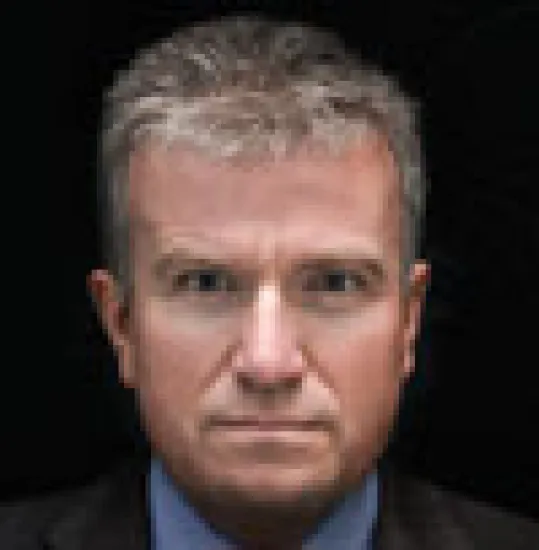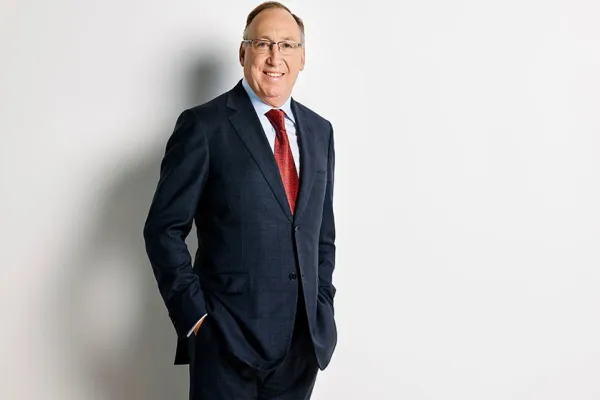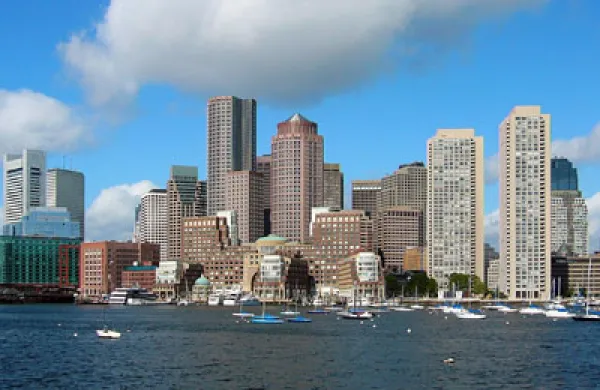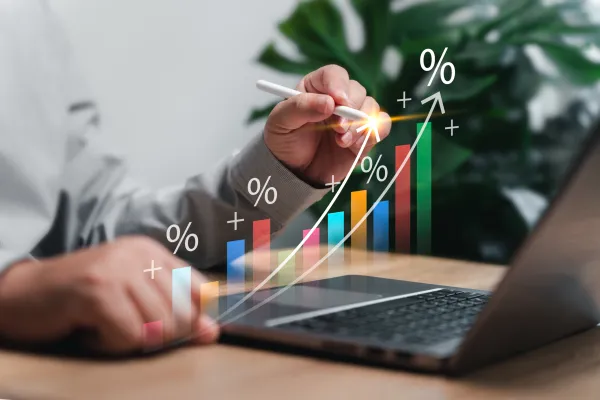For most of the world, the crisis that has hit financial markets has been an unmitigated disaster, devastating investors’ holdings, bankrupting many venerable institutions and trammeling the reputations of nearly everyone else. For the New York Stock Exchange, all the chaos and uncertainty, the anguish, fear and volatility — especially the volatility — has been a godsend.
For starters, the Big Board is once again in the center of the action, having recaptured its traditional role as the most important pricing mechanism for stocks. “They set the opening price, and that permits trading to flow through our systems,” concedes an executive at one rival market. “Many of our customers don’t want to direct trades through our system until they see how the opening shapes up, at least not in this volatility.”
This isn’t just about bragging rights. NYSE Euronext, as the exchange’s parent is known, makes money from fees based on the volume of trading, as well as the sale of trading data and the charges it levies on companies to list their shares.
The market meltdown has brought unprecedented increases in trading activity: Average daily volume for October was 4.95 billion shares, up 9.5 percent from September, and nearly double the level of October 2007, according to an estimate by global investment bank Fox-Pitt Kelton’s New York office. That’s sweet music for the NYSE, which says it grosses 8 cents for every 100 shares traded, before privately negotiated costs such as specialist rebates are deducted.
And the exchange’s reliability in the face of chaos makes a good argument for companies to maintain their listings, which, at a cost of up to $500,000 a year, bring in 12 to 13 percent of annual revenues at NYSE Euronext. The number of listed companies is at a near-record level of about 2,600.
“I like our competitive position much better than I have for some time,” says Duncan Niederauer, CEO.
All this is quite a turnaround. Not long ago it seemed to many that the NYSE model, which continues to embrace an element of human intervention on a physical floor, was doomed. Now the crisis of global capitalism may have ironically given the NYSE, its beating heart, some much-needed breathing room.
It can use the help. After two centuries of dominance, the exchange was steadily losing ground, surrendering crucial market share to electronic rivals; a decade ago, according to Edward Ditmire, a stock analyst at Fox-Pitt Kelton, 80 percent of the daily trades in shares issued by companies listed on the NYSE were executed at NYSE. In October that figure was 42.8 percent. The good news, though, is that NYSE Euronext gained share in September, reversing a year-long slide. The market share for October was up from 41.9 percent in September, which was up slightly from 41.4 percent in August. That’s still well below the 59.8 percent it logged at the end of 2007, but at least the decline has been reversed. Exchange officials are encouraged to think that in a time of extreme stress traders are turning to them. “This difficult environment is giving us a chance to prove our value to all our clients,” says Lawrence Leibowitz, head of U.S. execution and global technology.
Further, exchange officials say that overall numbers reflect even greater strength during the most critical periods of the day, when prices are set. “We are now transacting the lion’s share of the trading business during the open and closing hours of the market, because we are able to handle those volumes at a time when other markets seem too nervous to quote in size,” Niederauer says.
Adds the managing director of trading operations at one bulge-bracket firm: “Sometimes it feels as if the stock exchange is the only place that I can count on to act the way it’s supposed to.”
Niederauer still faces difficult challenges. The core business is under assault by digital technology, deregulation and globalization, and the company needs to find new sources of revenue and growth. “There aren’t many companies that have ever gone through such a massive transformation. The problem they face today is that they have to take all the raw material they have and make it work properly,” says Ditmire.
NYSE Euronext possesses what remains the world’s most powerful exchange brand, but it is just one of a handful of global exchanges battling to extend their geographic footprints and expand their range of products — and its position is middling. With a market capitalization of $7.81 billion, it ranks between such bigger rivals as Deutsche Börse of Frankfurt ($12.1 billion) and the CME Group ($16.6 billion) and smaller competitors Nasdaq OMX Group ($6.1 billion) and the London Stock Exchange Group ($2.8 billion).
Niederauer has been making deals to strengthen its global presence. NYSE Euronext took a 25 percent stake in Qatar’s Doha Securities Market earlier this year for $250 million in cash. NYSE Euronext took a 5 percent stake in the Multi-Commodity Exchange in Mumbai in February. It opened a Beijing office in December 2007 too. CME has grown revenues at an annualized rate of 30.21 percent over the past five years, compared with 24.87 percent for NYSE Euronext. CME has an edge because its futures and options contracts are a faster-growing business than stocks and the products it creates can’t be traded elsewhere.
Concerns about the financial markets and NYSE Euronext’s valuation have hammered the share price, which closed at $30.18 on October 31. That’s down from a 52-week high of $92.73 in Decemeber 2007. Investors also have recoiled from what they viewed as the slow pace of cost savings from the Euronext merger. In the wake of that transaction, the stock was “priced for perfection,” Niederauer says. Cost savings amounting to some $250 million a year won’t be fully realized until the end of 2010, rather than the beginning.
NYSE Euronext investor Thomas Caldwell, founder and chairman of Toronto-based Caldwell Financial and New York–based Caldwell Asset Management, says he remains optimistic about the company’s prospects, “Nobody out there is looking at the exchange’s fundamentals,” says Caldwell, whose funds own 3 million shares, or about 1 percent of the 266 million shares outstanding. Caldwell thinks NYSE Euronext is a “misunderstood and underresearched business.” Like many other investors in this arena, he expects a thorough regulatory overhaul to follow this autumn’s mayhem. Caldwell argues that as part of that process, regulators will step away from the policies that have encouraged the development of small, opaque rivals to the NYSE and other exchanges and instead emphasize the transparency associated with exchange-based trading.
A significant part of NYSE Euronext’s chance of success can be attributed to Niederauer’s predecessor, former CEO John Thain, who arrived in 2004 from Goldman Sachs Group. He cleaned up the NYSE’s reputation, which had suffered amid the scandal over former CEO Richard Grasso’s pay. The first step in Thain’s plan to reinvent the NYSE for a new era was its 2006 merger with electronic exchange Archipelago Holdings. That transaction transformed the exchange into NYSE Group, a publicly traded company for the first time in its history. That step was followed in 2007 by the merger with Paris-based Euronext, putting the business on a global footing and gaining greater access to capital. Thain hired Niederauer as president and co–chief operating officer as part of his succession plan.
Thain’s accomplishments notwithstanding, Niederauer inherited a mess. The Big Board had a badly outdated technology platform and a market share that was rapidly going south.
Niederauer was known at Goldman as an early advocate of online trading. He ended up in that role almost by accident, though. A graduate of Colgate University, where he took as many English literature as economics classes, Niederauer’s first job was running a small restaurant in Atlanta. He got his MBA at Emory University in 1985. While searching for a summer job, he wrote to George Doty, then chief operating officer of Goldman, which at the time didn’t recruit at Emory. Doty carried the letter to Goldman’s personnel office himself, leading the staff there to assume that the two men knew each other and that, therefore, they should probably bend over backwards to give Niederauer an interview. Arriving in New York, Niederauer quickly disabused them of that illusion but went on to impress his interviewers and land a summer job. He stayed on for more than 20 years, rising to co-head the equities division execution services. Niederauer also managed global clearing and execution at Goldman’s Spear, Leeds & Kellogg unit.
Niederauer started his first job on a trading floor just a month before the crash of October 1987. He was hooked. “I thought this was the coolest place I had ever been, and I knew right away that this was the part of the business I wanted to be in,” he says. (Niederauer’s fascination with the buzz didn’t surprise his mother, who still has a copy of an eighth-grade term paper he had written on the topic of “Everything You Always Wanted to Know About the New York Stock Exchange But Were Afraid to Ask.”)
Early in the 1990s, Niederauer watched technology transform the back-office operations of investment banks and their customers. He began to push to offer electronic trading to Goldman’s clients, long before senior management there believed computer-trading models could ever capture significant market share. Then, in the late 1990s, new order-handling rules in the industry laid the foundation for an explosion in electronic trading. “By then, Duncan had become the go-to guy for all the major buy-side institutions trying to understand electronic trading,” recalls Tim Mahoney, then head of trading for Merrill Lynch Investment Managers and currently CEO of BIDS Trading, an alternative trading platform.
Thain brought Niederauer to NYSE Euronext to tap that expertise. Niederauer quickly realized that he would have to ensure the exchange’s electronic trading system was much more robust. He oversaw the final stage of the replacement of the NYSE’s old mainframe-based networks with new servers and ramped up investment in new capacity. Without those upgrades the exchange couldn’t have handled huge surges in volume and volatility, such as the record 1,000-point intraday swing that the Dow Jones industrials made on October 10.
“A year ago we would have fallen apart. The technology capacity just wasn’t there,” concedes Leibowitz, who oversees day-to-day operations at NYSE Euronext.
Now that the exchange’s technology has been overhauled, Niederauer is expanding NYSE Euronext’s global footprint and adding new products and services. That strategy has helped retain listings such as AutoZone, a Memphis-based auto-parts retailer. Brian Campbell, the company’s head of investor relations, has no intention of suggesting the company change its listing. True, only about 50 percent of the volume in the stock crosses on the NYSE itself, down from 85 percent a year or two ago. Campbell says that’s still enough volume to get very helpful insights into the way his company’s shares are trading.
His work day starts with an NYSE alert, delivered to his desktop at 8:30 a.m., telling him how AutoZone’s shares seem likely to open. “I can see, real time, which brokers from which firms are buying or selling our stock,” Campbell says. If he sees that a particular trader has been selling or accumulating large blocks of stock over the course of one or more trading sessions, Campbell can follow up by placing a call to his own contact at the firm and fishing for more information. “I know they can’t tell me who the client is, but just knowing whether it’s one client or several buyers is helpful to me.”
Over time that means Campbell can identify trends at an early stage, better positioning him to respond to the inevitable calls from investors wondering what is happening to the stock. “Five years ago all the exchange did for us [the listed companies] was to include us in promotional things like trade shows — that really didn’t give us anything,” Campbell says. “No one can rely on image alone — but they give us the affiliation with something that is a status symbol, as well as the value-added services. As long as I am getting both, I have no reason to move to Nasdaq just because it may cost less.” Nasdaq representatives didn’t respond to a request for comment.
The development of new products helped stabilize revenues even as, until recently, market share shrunk. Revenue for the third quarter of 2008 grew 7 percent, to $1.2 billion, compared with the third quarter of 2007. Net income for the third quarter fell 33 percent, to $174 million from $258 million in the comparable period of 2007. One reason: the delayed capture of $250 million in annual technology cost savings from the Euronext merger.
Niederauer hopes to boost growth and profits by expanding into options and other derivative securities. That was the point of the $260 million American Stock Exchange acquisition, completed October 1. Customers are becoming clients of the NYSE’s options division and Euronext’s Liffe in London. And Archipelago expects to begin trading options on major European indexes such as France’s CAC 40 and the U.K.’s FTSE 100 by the end of 2008. Derivatives trading is one of the fastest-growing parts of the exchange’s business, with volume soaring 38 percent during the third quarter, compared with the third quarter of 2007.
NYSE Euronext has also emerged as a competitor to Nasdaq in the rapidly expanding business of listing exchange-traded funds and exchange-traded notes. That’s now a $594 billion–asset business, according to Morningstar, involving 718 exchange-traded funds. They have emerged as popular, low-cost alternatives to mutual funds. The acquisition of the American Stock Exchange has added about 429 exchange-traded products.
Niederauer is also expanding the definition of who his customers are. Historically, the NYSE’s customers have been broker-dealers, floor brokers and anyone else who wanted to pay to trade stock on its floor — or, more recently, on its electronic platforms. Today the definition of the word “customer” is broader, including stock exchanges (like the Abu Dhabi Securities Market) and other industry players that purchase its technology products. NYSE Euronext has sold its technology to the Options Market of the Tokyo Stock Exchange and the Brazilian BM&F Bovespa exchanges.
The European and U.S. sides of the exchange have introduced a new cross-platform pricing scheme that they hope will encourage users of one network to begin trading more actively on the other. Euronext’s new multilateral trading platform — an initiative that is designed to help Euronext minimize any loss in market share as competition heats up on that side of the Atlantic — will offer high-speed trading at minimal costs in its most liquid securities. It will be based on technology developed and used by the NYSE’s electronic division, Archipelago.
None of these initiatives would do much good, though, if Niederauer hadn’t upgraded NYSE Euronext’s technology. Those new servers are riding like a supertanker through the roughest financial seas in memory. On Friday, October 17, one week after the record volatility of the 10th, market participants on the floor of the New York Stock Exchange prepared to wrap up yet another turbulent session. “We’re all exhausted,” sighed Doreen Mogavero, a veteran floor trader with Mogavero, Lee & Co. Seconds before the closing bell rang, though, the electronic beeps that signal a customer order is arriving on the handheld computers through which floor traders direct buy and sell orders became so frequent that they blended into a single shrill note that echoed throughout the floor. More than 200 million shares changed hands in those final seconds, most of them sell orders. The Dow average, which had been trading 12 points lower only a few minutes earlier, closed with a 127.04 point loss. “I guess the market got tired, too,” said Mogavero, shrugging off her trader’s jacket and preparing to leave for the week. “But the world is still turning, and the exchange is still functioning, and that is what matters.”






